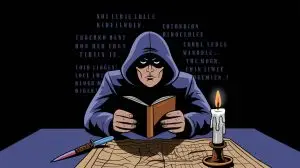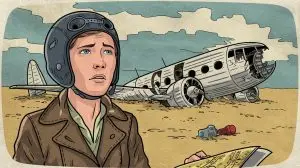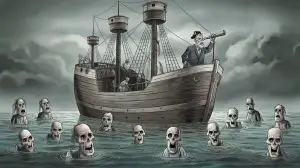Retelling of Jack and the Beanstalk for kids can bring the classic fairy tale to life in fresh and exciting ways. Whether through animated videos or interactive activities, retelling this magical story helps children engage with timeless themes of adventure, bravery, and discovery.
Children love the part where Jack climbs the towering beanstalk, enters the giant’s world, and outsmarts his enormous foe.

Integrating educational activities like vocabulary cards and math games inspired by the story can enhance the learning experience.
For example, using a sensory bin and storytelling activity can make the retelling interactive and fun. Check out engaging resources like those involving Jack and the Beanstalk that blend play with education.
For a dynamic experience, animated versions of the tale can captivate young minds. Videos, such as the full story available on YouTube, offer a visual journey that complements the text, making the adventure even more vivid and memorable.
This combination of visual storytelling and interactive play ensures that the magic of “Jack and the Beanstalk” endures for new generations.
The Origins of ‘Jack and the Beanstalk’

“Jack and the Beanstalk” is a tale with a rich history and cultural significance. This section explores its historical roots and how it has impacted different cultures over time.
Historical Background
“Jack and the Beanstalk” is an English fairy tale with roots going back centuries. The earliest printed version, titled “The Story of Jack Spriggins and the Enchanted Bean,” appeared in 1734. This version laid the groundwork for later versions.
In 1807, Benjamin Tabart published “The History of Jack and the Bean-Stalk,” adding moral lessons to the story. This publication is significant because it gave the tale a more structured form and introduced moral elements that were not in the original.
The story further evolved when Henry Cole, under the pen name Felix Summerly, popularized it in 1845 through “The Home Treasury.” Another key rewrite by Joseph Jacobs in 1890 in “English Fairy Tales” cemented many of the elements we recognize today.
Through these versions, the story of Jack, his magical beans, and the giant has been passed down through generations, becoming a staple of children’s literature.
Cultural Significance
“Jack and the Beanstalk” has gone beyond being just a story; it has become a cultural icon. This fairy tale has been adapted in various forms, including books, films, and even animations. Each adaptation reflects the values and norms of its time, making it a versatile and enduring story.
The tale often features strong moral lessons. Jack’s journey from a poor boy to a hero who defeats a giant resonates with themes of bravery and cleverness. These elements make the story relatable to children, teaching them important life lessons through adventure and fantasy.
Interestingly, cultural elements like Marxism have influenced some versions. For example, Andrew Lang’s 1890 version added layers by reflecting the society and culture of his time. This shows how the tale not only entertains but also adapts to communicate various cultural narratives.
Character Profiles

In “Jack and the Beanstalk,” each character plays a crucial role, from the curious Jack to the fearsome giant. This section explores their personalities and importance in the story.
Character Development
Jack
Jack is a young boy living with his mother. Known for his curiosity and bravery, Jack often gets into mischief. His decision to trade their cow for magic beans shows his adventurous spirit.
Jack’s Mother
She’s practical and caring but struggles with their poverty. Her initial anger at Jack is quickly replaced by hope when the beanstalk leads to riches.
Giant
The giant is terrifying yet quite simple-minded. Living atop the beanstalk, he hoards treasures, including a golden goose. His iconic line, “Fee-fi-fo-fum,” adds to his intimidating presence.
Giant’s Wife
She’s kinder than her husband and assists Jack, albeit unknowingly. Her role adds depth to the giant’s household dynamic.
Bean Seller
Selling Jack the magic beans, the bean seller is mysterious and prompts the adventure. His brief appearance sparks the entire story.
Significance of Characters
Each character in “Jack and the Beanstalk” has a unique role.
Jack
He represents the virtues of curiosity and bravery. His actions drive the plot, leading to his family’s eventual prosperity.
Jack’s Mother
She embodies the struggles of poverty and the hope for a better future. Her transformation from doubt to belief mirrors the story’s magic.
Giant
The giant is the primary antagonist. His greed and size represent the challenges Jack must overcome. His defeat symbolizes the triumph of wit and bravery over brute strength.
Giant’s Wife
Her kindness highlights the complexity of characters often viewed as villains. She adds a layer of humanity to the giant’s world.
Bean Seller
He symbolizes unexpected opportunities. His brief role is vital, setting the entire magical journey in motion.
Plot Overview
Jack is a young boy living with his widowed mother. They are very poor and have only a cow named Milky-White as their source of income.
One day, Jack is sent to sell Milky-White at the market. Instead of money, he comes home with magic beans given to him by a mysterious bean seller.
Jack’s mother is furious and throws the beans out the window. Overnight, a giant beanstalk grows up to the sky.
The next morning, Jack climbs the beanstalk. He discovers an enormous castle at the top where a giant and his wife live. Jack sneaks into the castle.
Inside the castle, Jack finds gold coins, a magical harp, and a hen that lays golden eggs. He steals these treasures over several trips up and down the beanstalk.
The giant eventually notices the thefts. Jack narrowly escapes with the help of the giant’s wife.
In the end, Jack chops down the beanstalk as the giant is climbing down. The giant falls to his death, freeing Jack and his mother from poverty.
Jack’s daring adventures show his bravery and cleverness. The magical elements, like the beans and the beanstalk, add a sense of wonder. The story’s setting shifts from Jack’s humble home to the fantastical world above the beanstalk.
Educational Approaches to the Tale
“Jack and the Beanstalk” is a great story for teaching kids about morals, vocabulary, and creativity. There are fun ways for teachers and parents to use this tale as a tool for learning.
Learning Through Storytelling
Storytelling helps kids understand the narrative and sequence of events. Teachers can use tools like stick puppets to make the tale interactive. Acting out stories can make the learning experience more engaging.
Kids can practice retelling the story in their own words using a story mountain to help sequence the events. This not only sharpens their memory but also their storytelling skills.
Breaking the story into beginning, middle, and end can make it easier for young learners to grasp.
By discussing the difference between fantasy and reality, teachers and parents can guide children to explore imaginative thinking while understanding the boundaries of real life.
Engaging in craft activities where kids create their own versions of the beanstalk or the giant’s castle helps develop fine motor skills and encourages creativity.
Hands-On Activities and Crafts
Kids love interactive activities that make stories come to life. With “Jack and the Beanstalk,” there are plenty of fun ways to get them involved using crafts and props.
Crafting the Beanstalk
Creating a beanstalk can be a fun and engaging activity. An old shoebox, paper, and paints can be used to make a 3D story box. This project involves using simple materials like cotton balls for clouds and marbles for magic beans.
Materials Needed:
- Shoebox
- Green paper
- Paints
- Cotton balls
- Marbles
Start by painting the shoebox to create the sky and ground. Cut green paper into leaf shapes to form the beanstalk, and attach it to the inside of the box. Cotton balls can be added to simulate clouds, and marbles can represent the magic beans. Kids can use this 3D story box to visually retell the tale.
Character Puppets for Retelling
Using character puppets is another fantastic way to retell the story. This activity can be simple with printable cutouts or more creative by crafting puppets from materials like fabric and yarn.
Children can make puppets of Jack, the Giant, and other characters.
Ideas for Puppets:
- Paper puppets: Print and color Jack and the Beanstalk cutouts
- Sock puppets: Use old socks, yarn for hair, and fabric scraps
- Popsicle stick puppets: Draw characters on thick paper and glue them to sticks
These puppets can help kids practice sequencing the events of the story. They can act out scenes, which aids in comprehension and makes retelling more engaging.
Engaged kids will experience the magic of “Jack and the Beanstalk” while developing their creativity and storytelling skills.
Incorporating Jack and the Beanstalk in Different Subjects
Kids can learn a lot from Jack and the Beanstalk by incorporating different subjects. This approach not only makes learning fun but also helps in enhancing various skills.
Math With Magic Beans
Imagine using magic beans to teach math! Kids can practice counting by sorting beans. They can group them in sets and practice addition and subtraction.
Teachers can also use beans to explain multiplication and division. For instance, “If Jack plants 3 beans and each grows 4 feet tall, how tall are the beanstalks combined?” This makes abstract concepts more concrete.
Story problems are another great idea. Posing questions like, “If Jack needs 5 gold coins and each beanstalk gives him 2, how many does he need to climb?” engages their minds in problem-solving.
Science in the Giant’s Castle
Exploring the giant’s castle offers cool ways to teach science. Discuss the biology of the beanstalk. How do plants grow? What do they need? This can lead to simple experiments like planting seeds in the classroom.
They can also look at the physics behind Jack climbing the beanstalk. What forces are at play? How does gravity work? Breaking down these concepts makes science lively and relatable.
The chemistry of the golden eggs presents another learning opportunity. What makes metals special? Why is gold valuable? These questions spark curiosity and align well with the wonders of science.
Using Jack and the Beanstalk in school subjects not only brings the story to life but also makes learning engaging and fun.
Digital Resources and Interactive Learning
Kids today can dive into the classic tale of Jack and the Beanstalk with modern tools. Interactive reading apps and printable resources both play a pivotal role in engaging young learners.
Interactive Reading Apps
Interactive reading apps transform storytelling into a lively adventure. Apps like Jack & the Beanstalk by Nosy Crow offer a highly interactive experience with animations, games, and sound effects.
Kids can tap characters to hear their voices or watch the story unfold in a fun, animated format.
Boom Learning offers Google™ Slides activities that help children practice identifying characters and settings.
These slides are drag-and-drop, making learning highly interactive. Kids not only read but also participate actively, enhancing their understanding.
Free resources on YouTube like this 15-minute animated retelling provide a visual and engaging way for kids to follow Jack’s journey up the beanstalk.
Watching stories online can capture children’s attention in ways traditional reading might not.
Printable Resources and PDFs
Printable resources provide a fantastic way to complement digital learning. Twinkl offers a variety of Jack and the Beanstalk activities, including magic bean number ordering.
These printables are great for hands-on learning, letting kids practice counting while staying engaged with the story.
Craft stick puppets from Twinkl allow children to retell the story themselves. They can print and glue these character images onto craft sticks.
This activity not only helps with storytelling but also fosters creativity.
Another fantastic resource is the story map PowerPoint. This can be used for kids to click through and visualize the sequence of events. It’s especially useful for remote learning, as children can use it at home.
Extending the Learning Experience

Learning doesn’t stop at the end of the story. By exploring discussion and comprehension activities as well as writing their own fairy tales, kids can dive deeper into the adventures of Jack and the Beanstalk.
These activities will help foster literacy skills and creativity while ensuring learning remains fun.
Discussion and Comprehension
Engaging in discussions about the story helps kids improve their reading comprehension. Start by asking questions about the key events, such as, “What did Jack trade for the magic beans?” and “Why did Jack climb the beanstalk?”
This encourages them to think critically about the plot and characters.
Use comprehension activities like sequencing the events in the story. Have kids put images or sentences in the correct order from beginning to end. This strengthens their understanding of narrative structure.
To differentiate the activity for various skill levels, provide simple yes/no questions for younger kids and open-ended questions for advanced readers.
You can also use vocabulary cards to help children learn new words from the story, enhancing their language skills.
Writing and Creating Own Fairy Tales
Encouraging kids to write their own fairy tales is a fantastic way to extend the learning experience.
Start by brainstorming with them about different characters, settings, and magical elements.
Ask them to imagine their own “beanstalk” adventure.
Provide a simple template for them to follow. The template should include sections for “Once upon a time,” “Problem,” “Solution,” and “Happily ever after.”
This guides them in structuring their narrative and helps them understand the elements of storytelling.
For added creativity, you can integrate craft activities. For example, kids can make their own story puppets or draw and color scenes from their tales.
These activities not only make writing enjoyable but also support their creative expression and fine motor skills.
By creating and sharing their own stories, kids enhance their literacy and develop a deeper love for reading and writing.
Steve is the creative force behind My Unique Tales, a blog dedicated to sharing captivating stories that explore the human experience in all its complexity. With a passion for writing and a talent for crafting engaging narratives, Steve's blog is a treasure trove of imaginative tales that transport readers to other worlds and challenge them to see things from new perspectives. From epic adventures to intimate character studies, Steve's stories are always thought-provoking and emotionally resonant. With a growing following of readers who appreciate his unique voice and creative vision, Steve is quickly becoming a rising star in the world of online storytelling.






